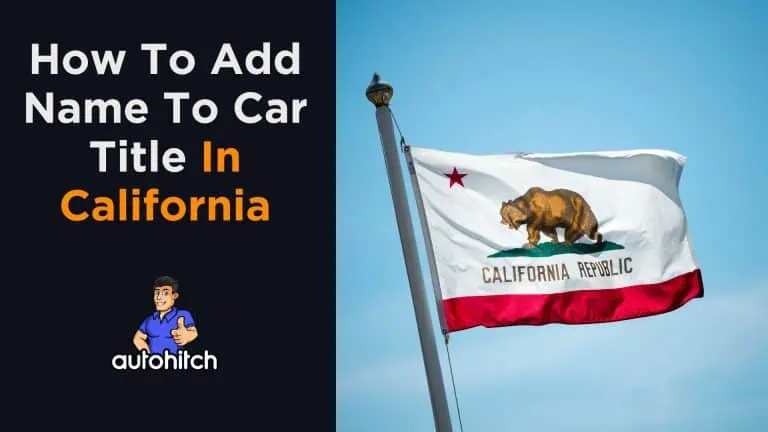Adding Family or Non-Family Name to California Car Title
If you’re looking for a simplified guide on how to add name to car title California, you’re in the right place.
The steps differ slightly depending on whether you’re adding a family member or a non-family member, but below I lay out the process for each in an easy to follow list of steps.
At the end of the article, I provided a list of all the state links to the various forms you’ll need to fill out before heading to the DMV.
Table of Contents
Adding a Family Member to a Car Title
When adding a spouse, child, parent, grandparent, grandchild, or sibling to your car’s title, you can take advantage of certain exemptions offered by the California DMV. Here’s what you need to do:
- Obtain the Current Title Certificate
Gather the existing California Certificate of Title for the vehicle. - Sign the Front of the Title
As the current registered owner, sign on Line 1 of the front of the title to release your interest. - Complete the Odometer Disclosure
If the vehicle is less than 10 years old, complete the odometer disclosure section on the front of the title and sign as both the seller and buyer. - Fill Out the Back of the Title
On the back of the title:
- Enter both your name and the family member’s name in the “Registered Owner” section.
- Check the “AND” or “OR” box between the names based on your preference.
- Both you and the family member must sign on lines 9a and 9b as the new registered owners.
- Submit Required Documents
Take the following documents to your local DMV office or AAA branch (if they offer DMV services):
- The signed title
- A completed Statement of Facts (REG 256) form to claim exemption from use tax and smog certification
- Payment for the $15 transfer fee
The DMV will then issue a new title with both names listed as the registered owners.
Adding a Non-Family Member to a Car Title
If you’re adding someone who is not a spouse, child, parent, grandparent, grandchild, or sibling, the process is slightly different:
- Obtain the Current Title Certificate
Gather the existing California Certificate of Title for the vehicle. - Sign the Front of the Title
As the current registered owner, sign on Line 1 of the front of the title to release your interest. - Complete the Odometer Disclosure
If the vehicle is less than 10 years old, complete the odometer disclosure section on the front of the title. - Fill Out the Back of the Title
On the back of the title:
- Enter both your name and the other person’s name in the “Registered Owner” section.
- Check the “OR” box between the names.
- Both you and the other person must sign on lines 9a and 9b as the new registered owners.
- Provide Additional Documents
Take the following documents to your local DMV office or AAA branch:
- The signed title
- A completed Vehicle/Vessel Transfer and Reassignment (REG 262) form signed by both parties
- Payment for the $15 transfer fee
- Smog certification (if applicable)
The DMV will process the request and issue a new title with both names listed as registered owners joined by “OR”.
Keep in mind that when adding a non-family member, you cannot claim exemption from use tax or smog certification requirements. Additionally, the “OR” designation between the names allows either party to conduct transfers or release interest in the future without the other’s consent.
Helpful State Links For Adding Name to Car Title
| Purpose | Form/Resource | Description | Link |
|---|---|---|---|
| Family Member Transfer | |||
| Exemption from use tax & smog | Statement of Facts (REG 256) | Required for claiming exemption from use tax and smog certification. | REG 256 |
| Completing the title transfer | How to Complete the California Certificate of Title (HTVR-5) | Instructions on properly completing the title transfer sections. | HTVR-5 |
| Non-Family Member Transfer | |||
| Transfer documentation | Vehicle/Vessel Transfer and Reassignment (REG 262) | Required when transferring to a non-family member, signed by both parties. | REG 262 |
| All Transfers | |||
| Replacement or transfer of title | Application for Replacement or Transfer of Title (REG 227) | Needed if the original title is lost or unavailable. | REG 227 |
| Release of liability | Notice of Transfer and Release of Liability (REG 138) | The seller must submit this form within 5 days of transferring the vehicle. | REG 138 |
| Title transfers overview | California DMV Title Transfers website | Provides an overview of the title transfer process and requirements. | DMV Title Transfers |
Final Thoughts
Hopefully, I was able to lay out the process in a way that’s easy to follow, but if I haven’t, just leave your questions in the comments below.



